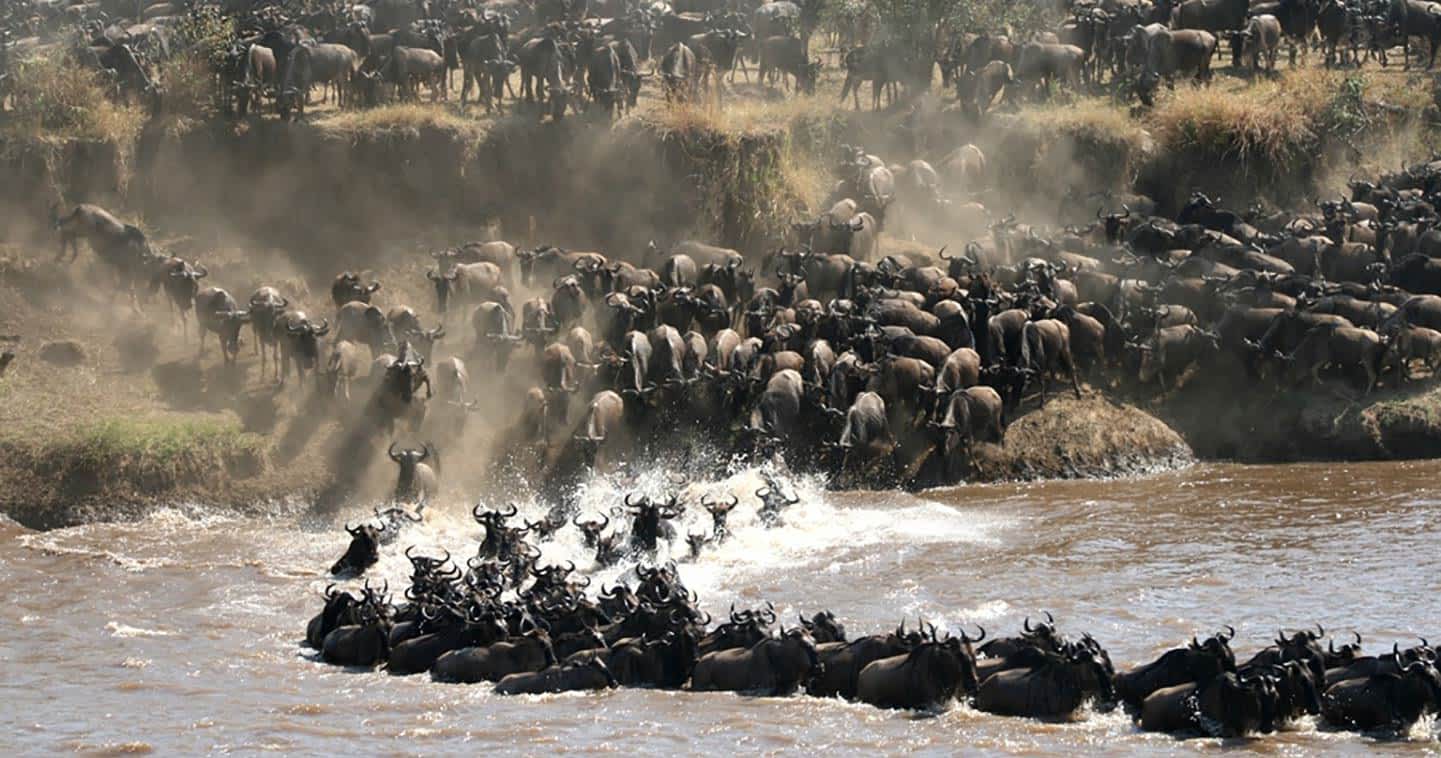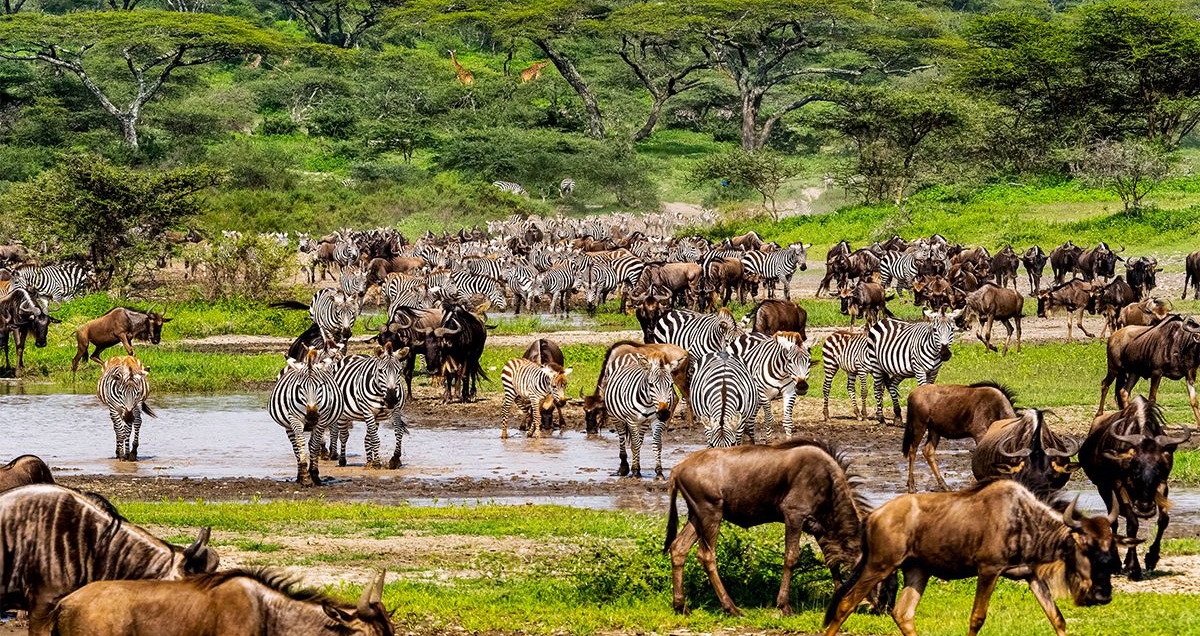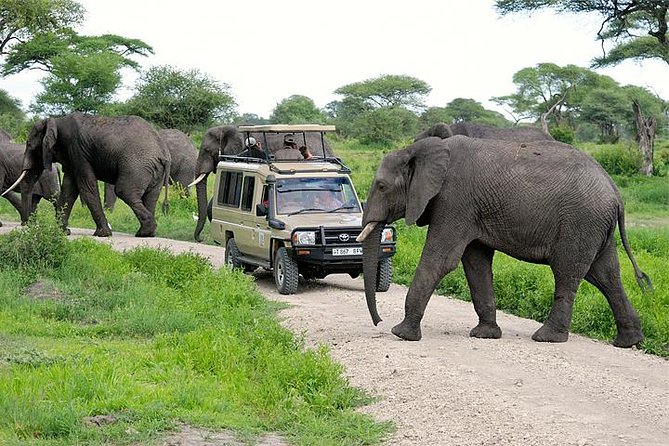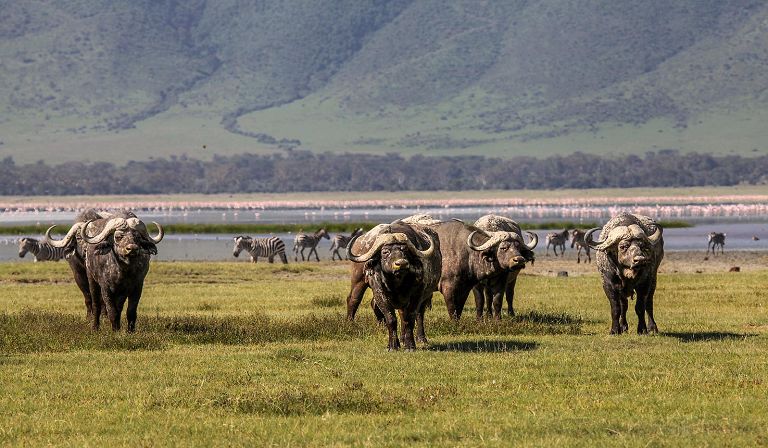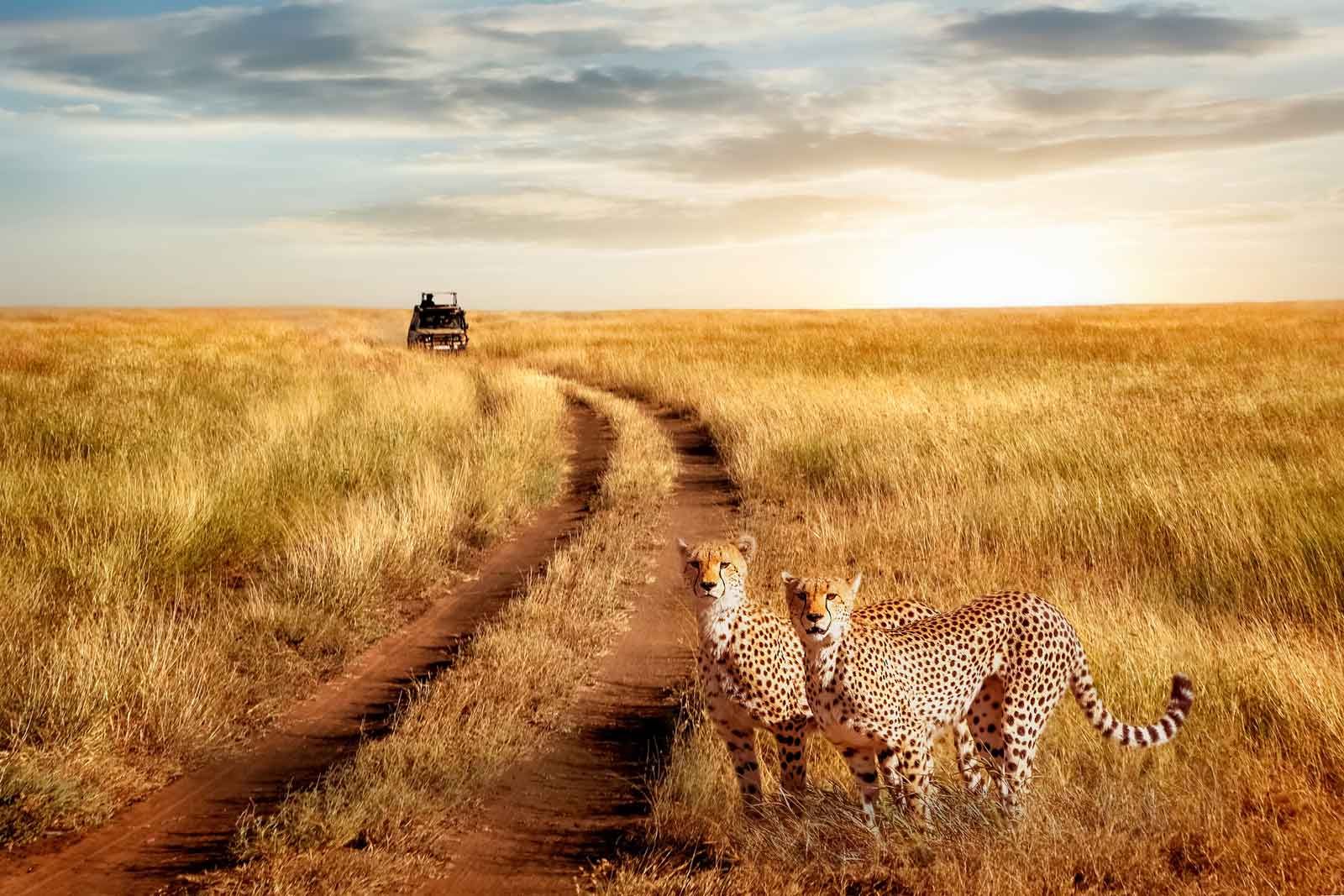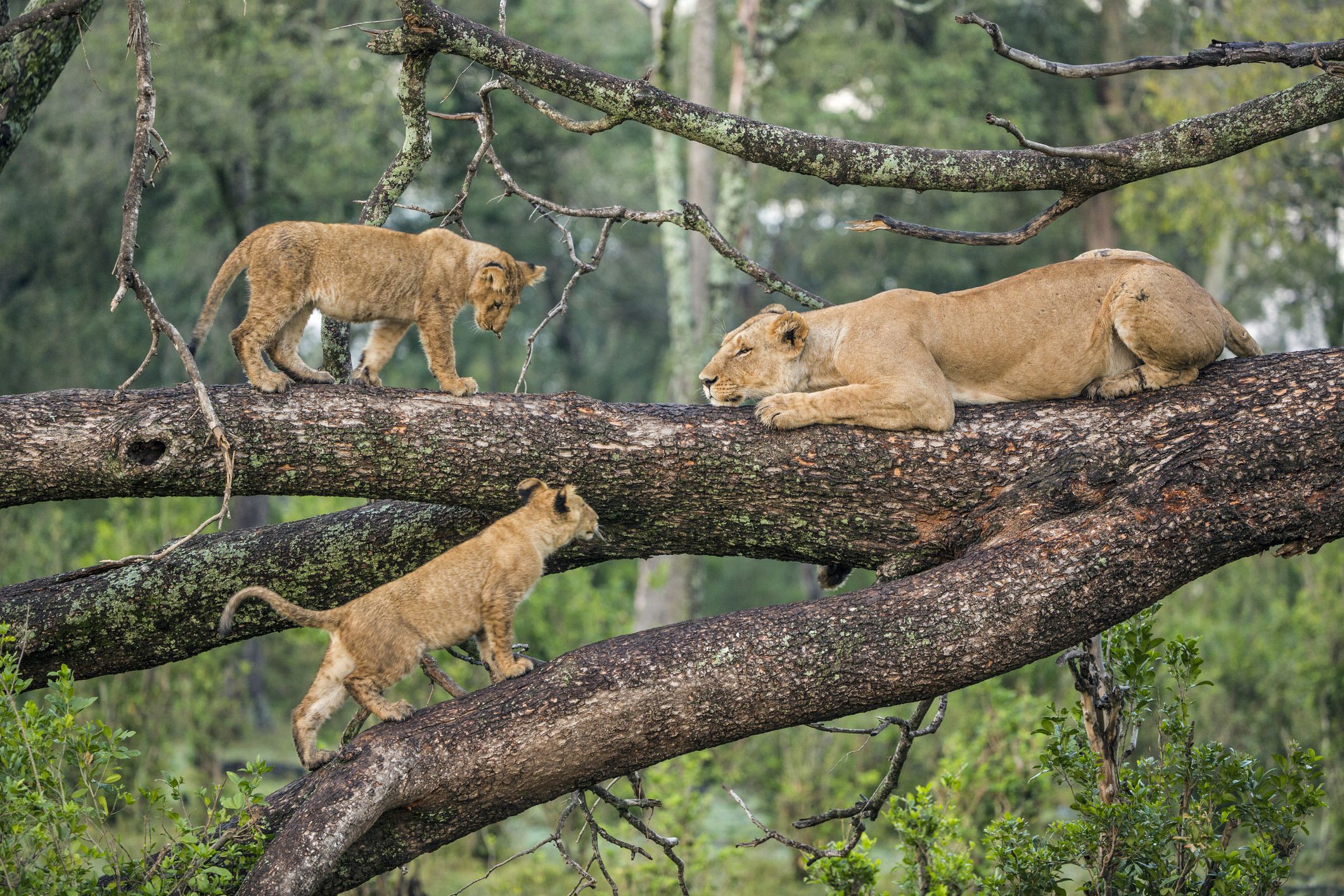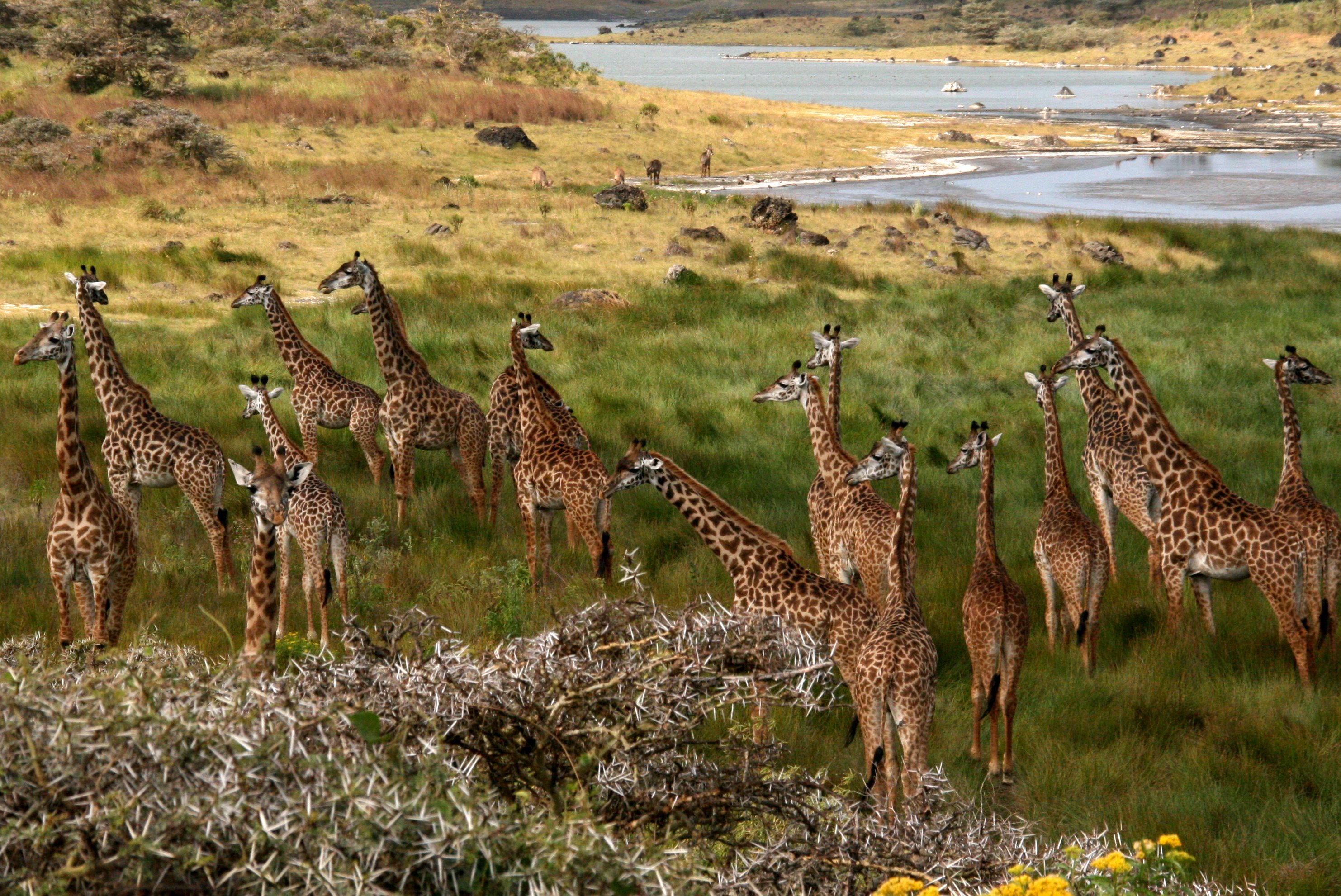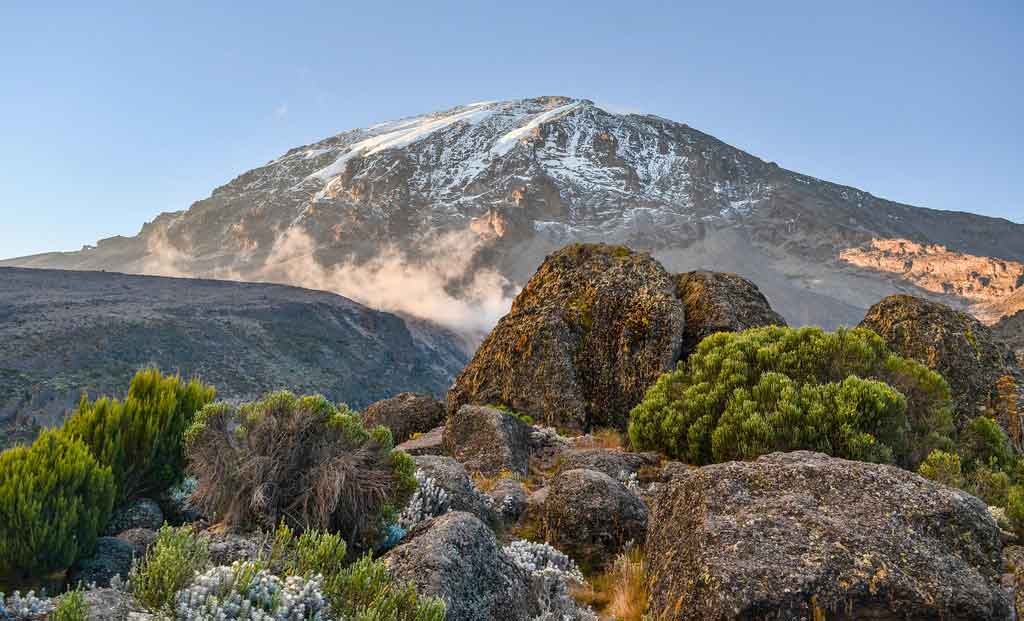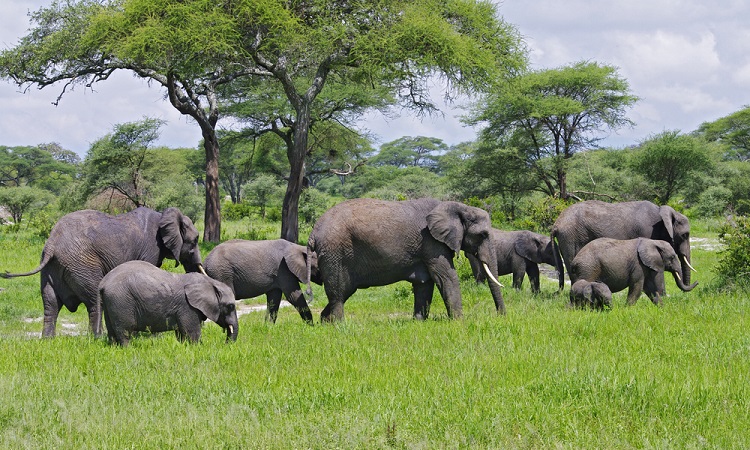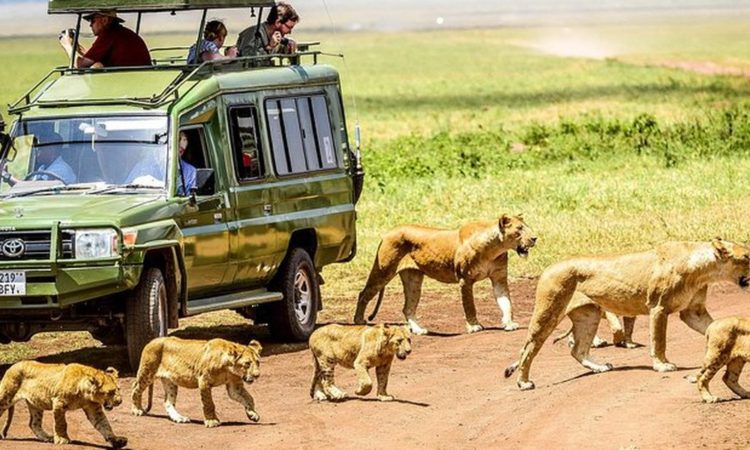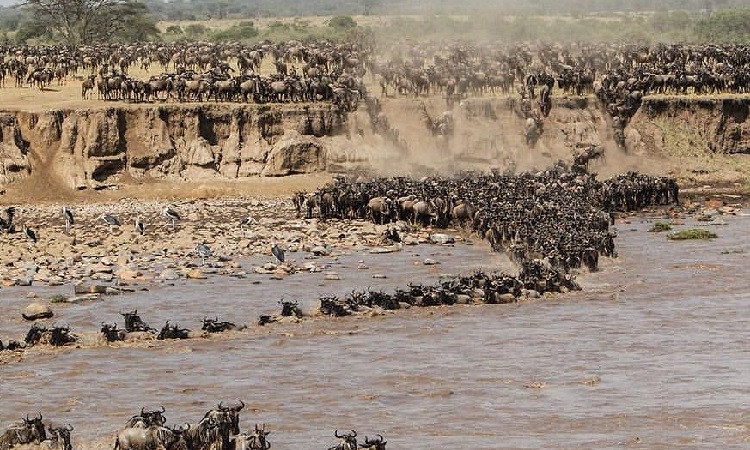Serengeti Migration
The Great Migration in the Serengeti is one of the most iconic wildlife spectacles in the world, drawing tourists and
wildlife enthusiasts from all over to witness the dramatic journey of millions of animals. It primarily involves the movement
of over 1.5 million wildebeest, along with hundreds of thousands of zebras, gazelles, and other herbivores,
as they traverse the Serengeti in search of fresh grazing lands. The migration is driven by the seasonal rains and the need for food
and water, and it’s often referred to as the "greatest show on earth."
Migration Cycle
The migration happens year-round, but it follows a pattern dictated by rainfall and the availability of fresh grass. Here’s a month-by-month
breakdown of the migration’s movement through the Serengeti:
---
January to March: Calving Season in Southern Serengeti
-
Location: Southern Serengeti and the
Ngorongoro Conservation Area.
-
What Happens:
- At the start of the year, the migration is located in the
southern Serengeti, specifically the
Ndutu region and surrounding areas.
This is when the wildebeest herds begin their calving season.
- Around
200,000 calves are born in a short period, usually between late January and early March. This is one of the most dramatic and
awe-inspiring sights of the migration. The calves’ arrival draws predators like lions, cheetahs, and hyenas in large numbers,
and you can witness the raw nature of survival as predators try to catch the vulnerable newborns.
- The lush grasses in the south provide rich grazing grounds for the herds.
-
Wildlife Viewing:
- Calving season is an excellent time for
predator viewing because of the abundance of young, vulnerable animals.
-
Great herds of wildebeest and zebra can be seen moving in massive groups, with a high chance of spotting
lions, cheetahs,
and
hyenas.
---
April to May: The Move North
-
Location: The wildebeest and zebras start heading northward, traveling through the central Serengeti.
-
What Happens:
- After the calving season, the herds start to move toward the
central Serengeti, following the rain patterns that continue to
bring fresh grazing.
- The herds often spread out in search of food, but the main movement is towards the
western corridor as the rains move through.
-
April to May sees the beginning of the rainy season, which brings lush, green vegetation, although it’s not the most popular time for
visitors due to potential muddy conditions.
-
Wildlife Viewing:
- While the weather can be rainy and muddy, the
green landscapes create beautiful photo opportunities.
- This is a time of
lesser crowds, but you might not get to see the herds at their densest concentration.
---
June to July: Entering the Western Corridor
-
Location: Western Serengeti, heading toward the Mara River in the northern Serengeti.
-
What Happens:
- By June, the herds begin to concentrate in the
western Serengeti, near the
Grumeti River, where the grasslands are abundant.
It’s a time when the migration begins to gear up for one of the most dramatic stages of the journey: the river crossing.
- During this period, the herds face their first major obstacle – crossing the
Grumeti River, which is often full of crocodiles,
making the crossing perilous.
-
Wildlife Viewing:
- The
Grumeti River crossing is one of the most exciting events in the migration cycle, with dramatic encounters between wildebeest
and crocodiles.
- This is a great time to see
predators like
lions, leopards, and
crocodiles as they target the vulnerable animals
during the crossings.
---
July to September: The Mara River Crossing – The Great Drama
-
Location: Northern Serengeti (near the
Mara River).
-
What Happens:
- By July, the herds are reaching the
Mara River, which is the final crossing point before entering
Kenya's Maasai Mara.
This is one of the most famous and dramatic stages of the migration, with wildebeest and zebras attempting to cross the river, often facing
large crocodiles waiting to snatch them from the water.
- This period is
peak season for safari-goers, with the most dramatic river crossings occurring during this time.
The migration can create an incredible spectacle as the herds struggle to navigate the river, while predators like lions, hyenas,
and cheetahs take advantage of the opportunity.
-
Wildlife Viewing:
- The
Mara River crossings offer the most intense wildlife viewing, with predators on the prowl and massive herds crossing the river
in large groups.
- You’ll also likely witness the
Great Migration at its peak with thousands of wildebeest, zebras, and gazelles.
---
October to November: Return South
-
Location: Northern Serengeti, heading back toward the south.
-
What Happens:
- After crossing into Kenya's Maasai Mara, the wildebeest and zebras begin to head south again as the dry season wears on and
the grass in the Mara begins to dwindle.
- The animals begin their journey back into the Serengeti as the rains start to fall in the south, marking the start of a new cycle.
- The herds move southward in large groups, sometimes splitting into smaller groups to avoid predators.
-
Wildlife Viewing:
- While the river crossings slow down, the
return migration still offers exciting sightings of animals.
- The herds will often be concentrated again in the
western Serengeti, and you can see
predators taking advantage of the
weakened herds.
---
December: Rest and Grazing
-
Location: Southern Serengeti and surrounding areas.
-
What Happens:
- The herds have generally returned to the southern Serengeti by December, where they can graze on the fresh grasses that have
sprouted after the early rains.
- There’s a slight lull in migration activities, but the herds are well-fed and beginning the cycle once again.
-
Wildlife Viewing:
- Calving begins again in
January, and predator-prey dynamics continue to be strong as the animals prepare
for another migration cycle.
---
Key Highlights of the Great Migration:
-
River Crossings: The Mara River crossing, with its dramatic action of wildebeest leaping into the water to avoid crocodiles and the challenges of predators, is one of the highlights of the migration. These river crossings occur primarily from
July to September.
-
Predator Action: The migration draws predators, particularly during calving (January to March), and river crossings (July to September), making it a prime time for seeing lions, hyenas, cheetahs, and leopards in action.
-
Massive Herds: The sheer size of the herds can be overwhelming, with up to
1.5 million wildebeest and several hundred thousand zebras and gazelles moving in synchrony across the Serengeti.
-
Photo Opportunities: The migration offers photographers incredible opportunities for action shots, including herds moving across vast landscapes, baby animals, and predator-prey interactions.
---
Best Time for the Great Migration:
-
June to October is the best time for witnessing the migration, especially for the
Mara River crossings.
- If you're interested in
calving season,
January to March is the best time to visit the southern Serengeti.
Summary:
The
Serengeti Migration is a year-round phenomenon, but the most exciting months are typically from
June to September when the wildebeest and zebras face river crossings, predators, and all the drama that makes the migration so iconic. Whether you want to see the wildebeest calves in the south or watch the intense river crossings in the north, the migration offers unforgettable wildlife experiences at different stages throughout the year.
